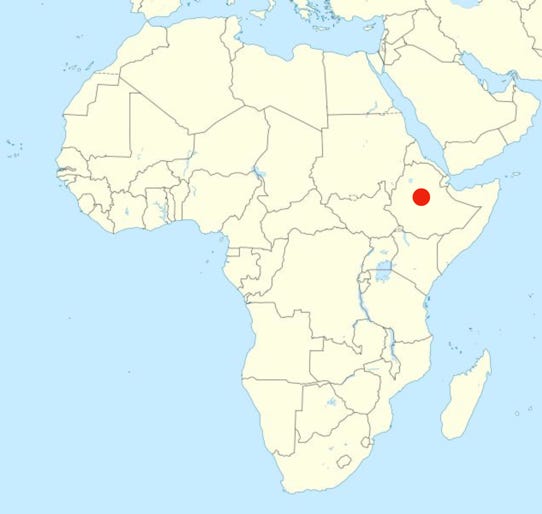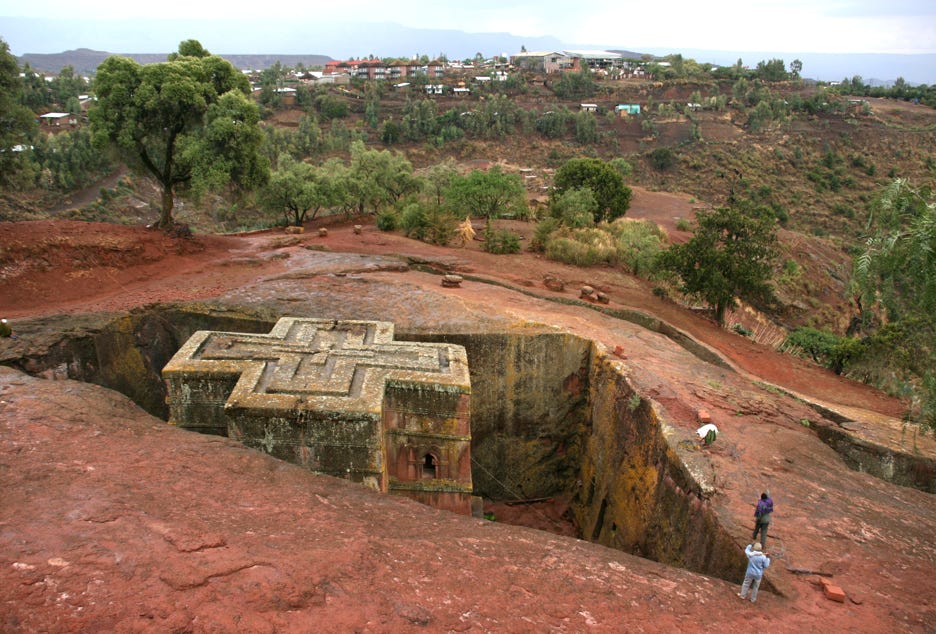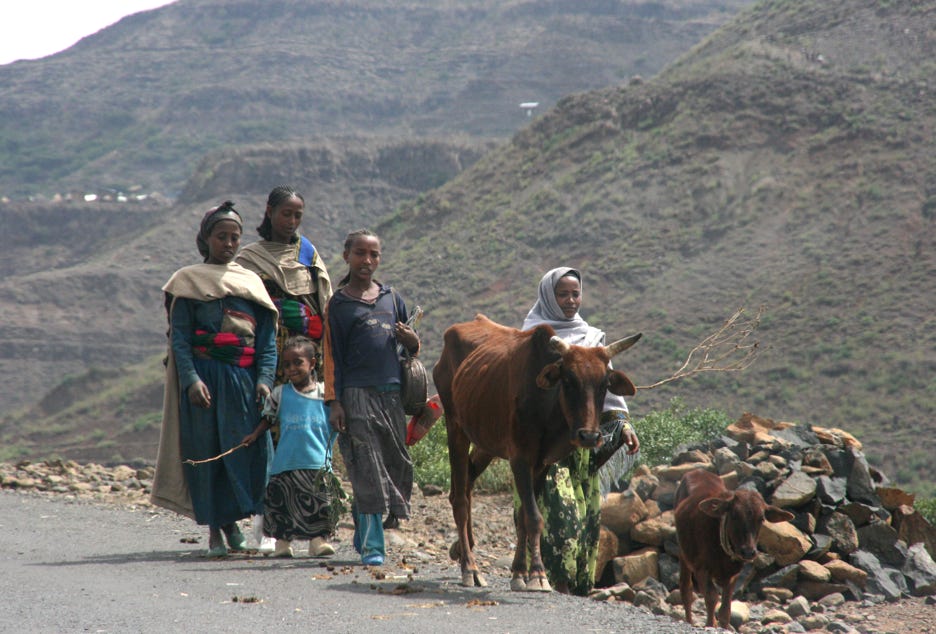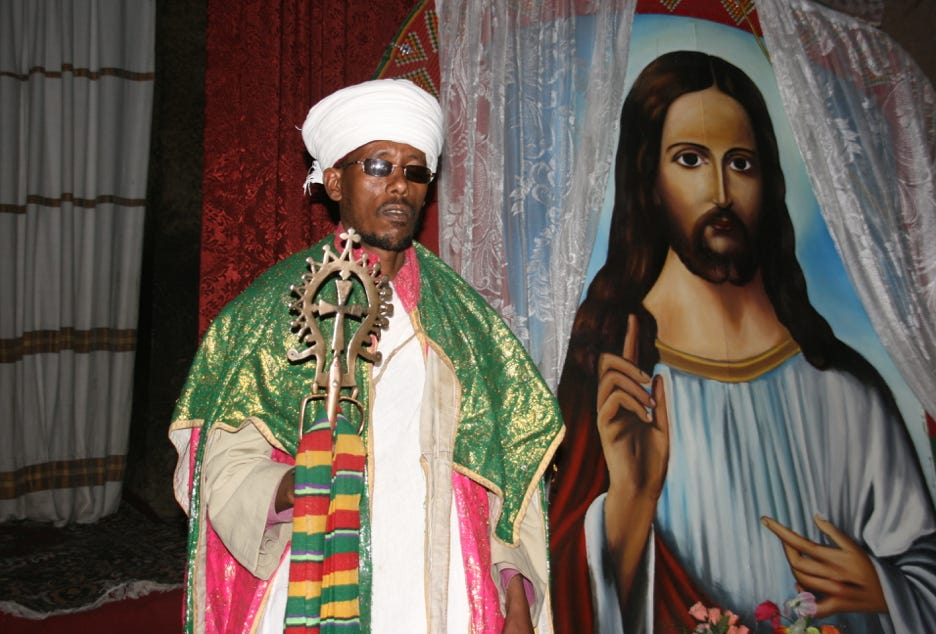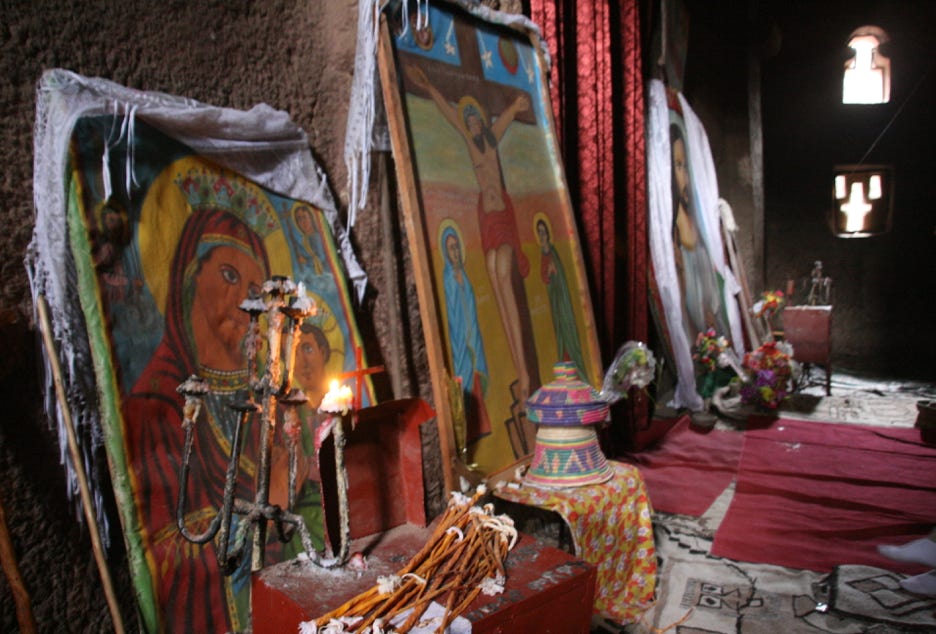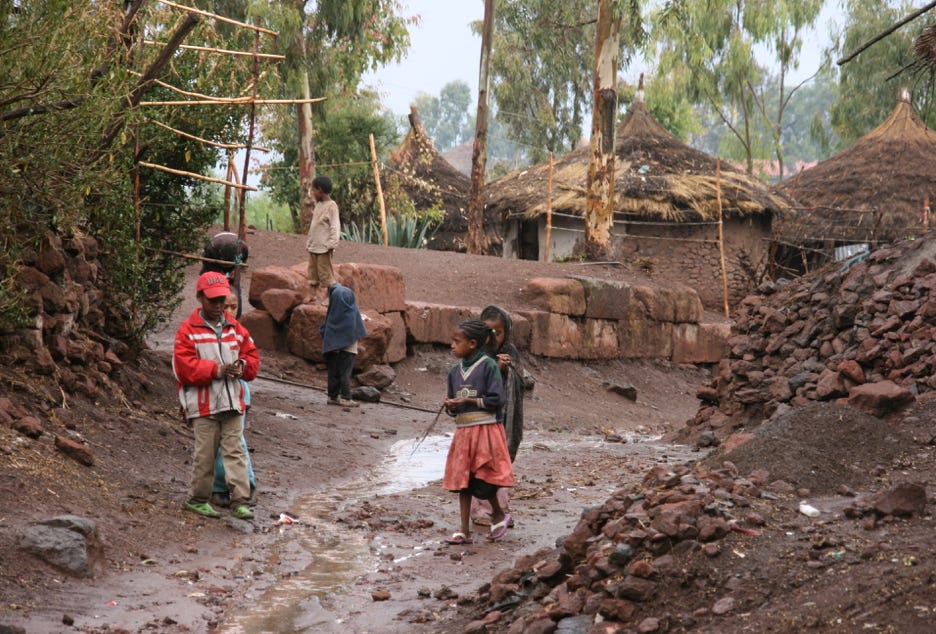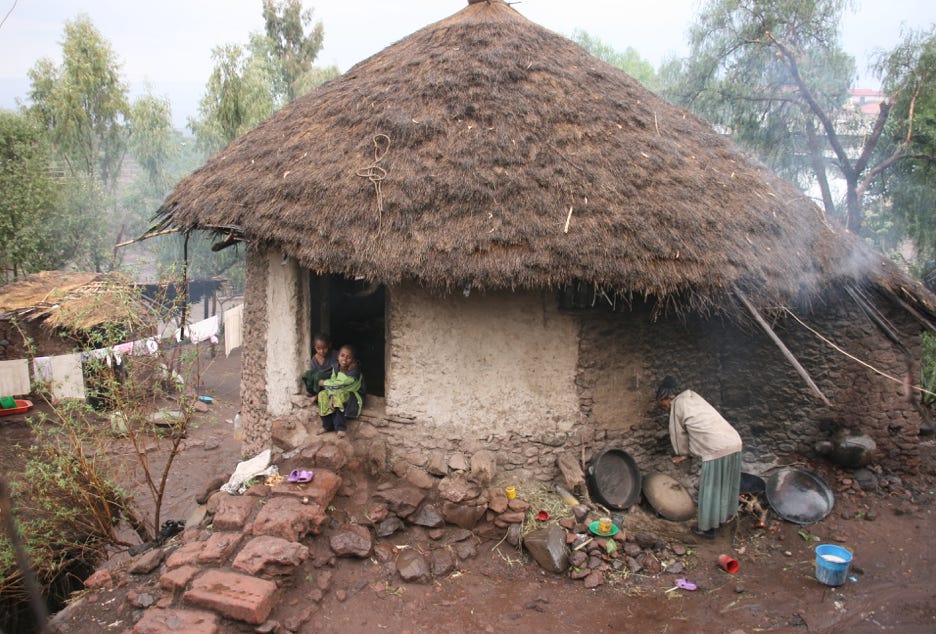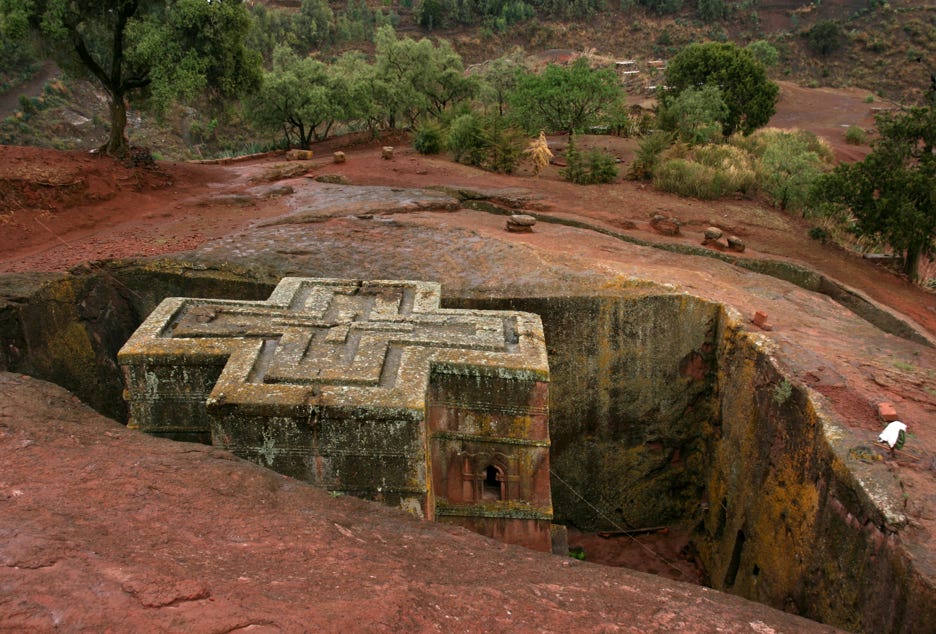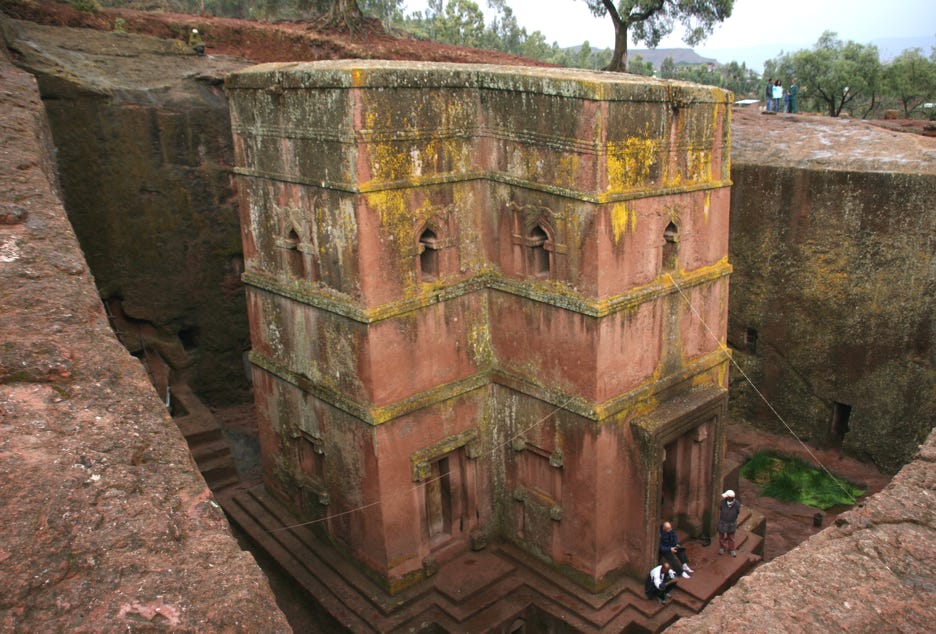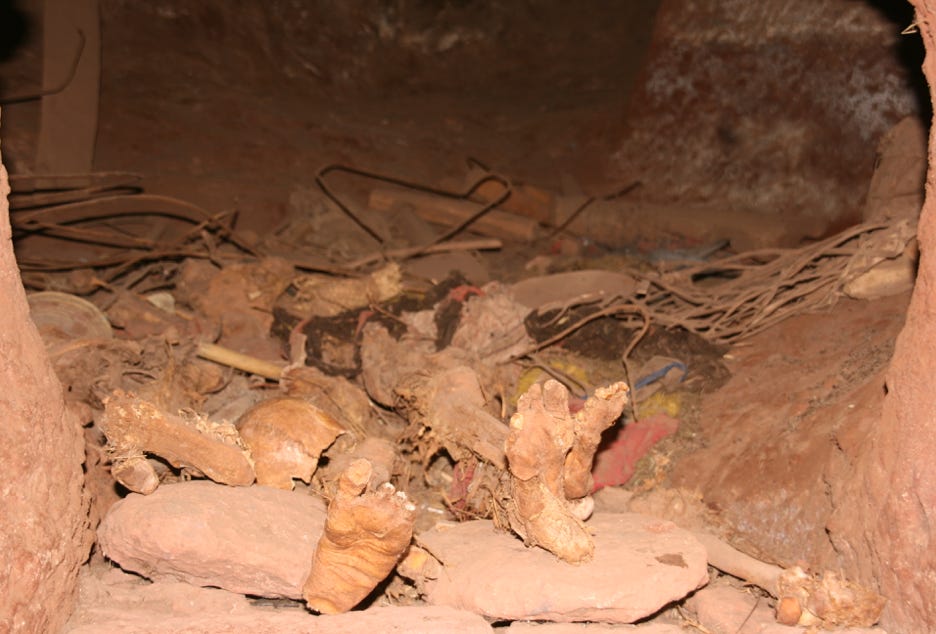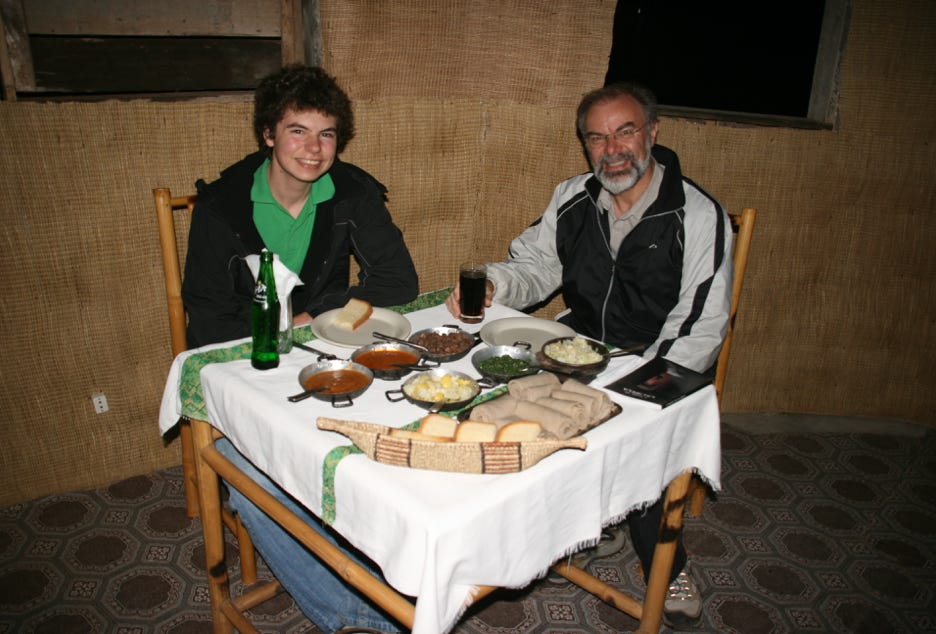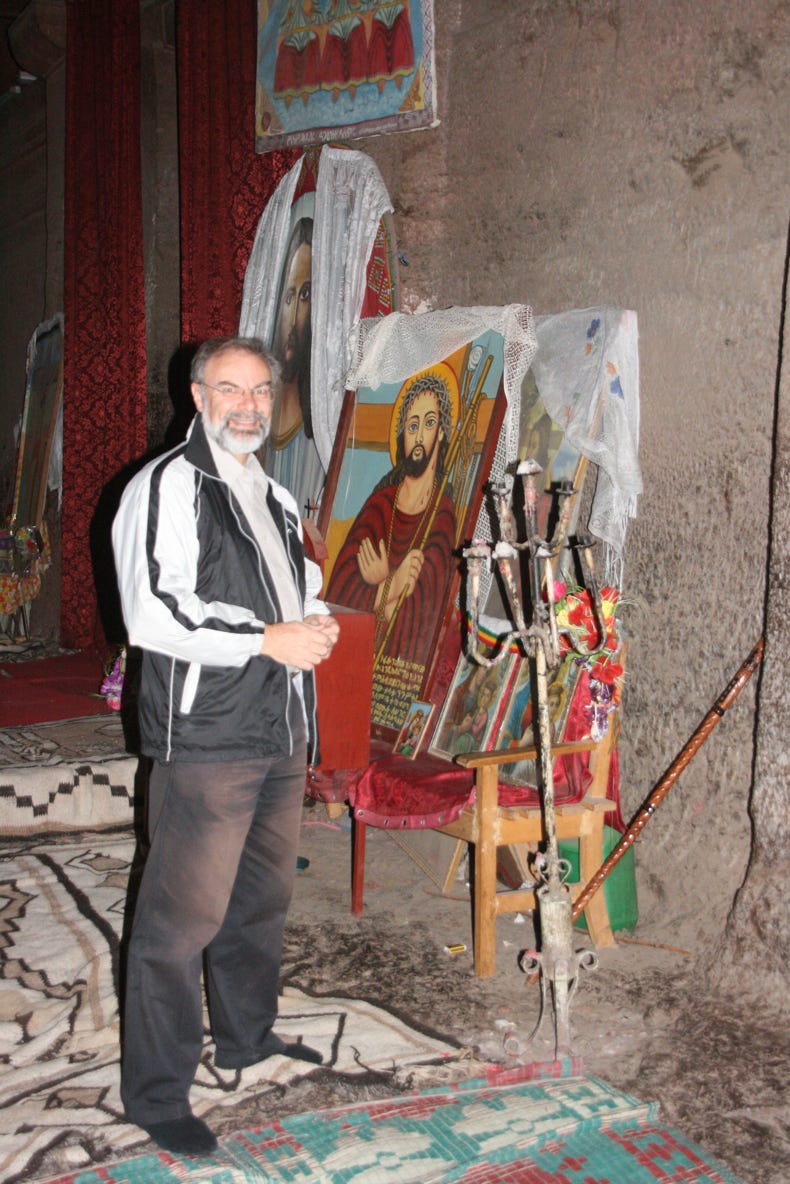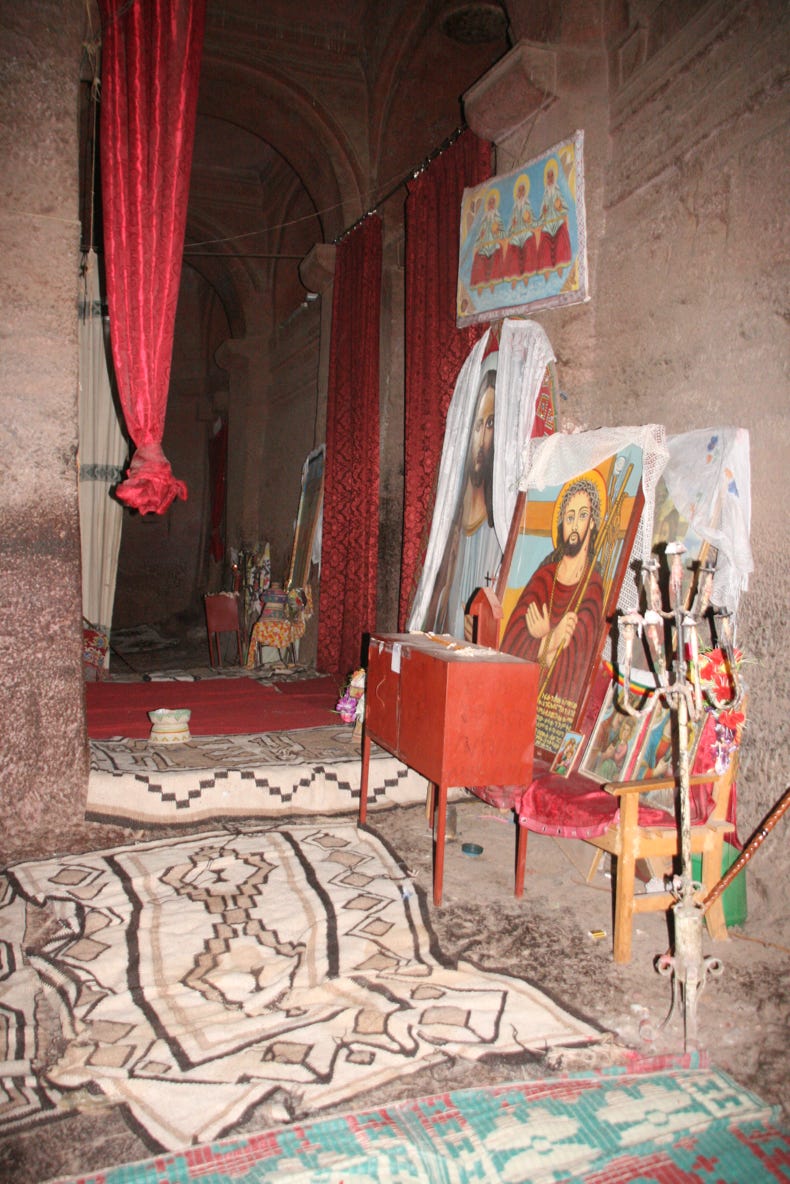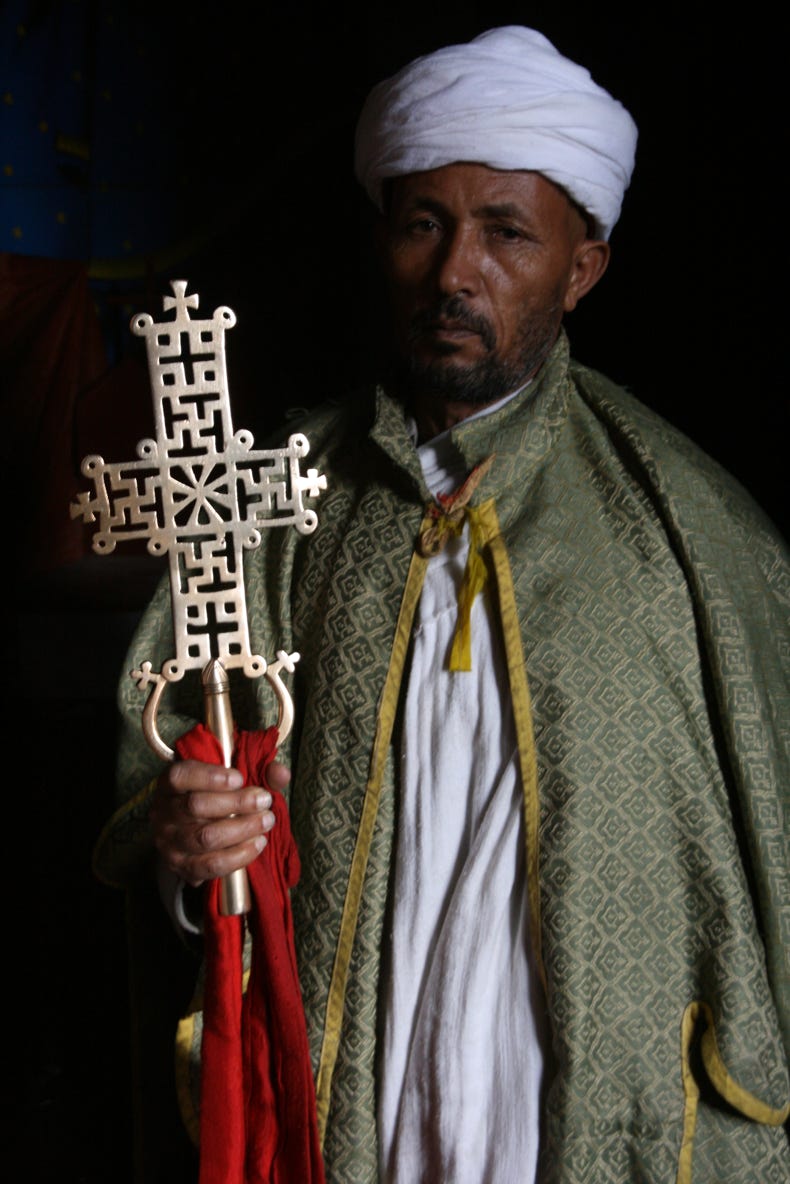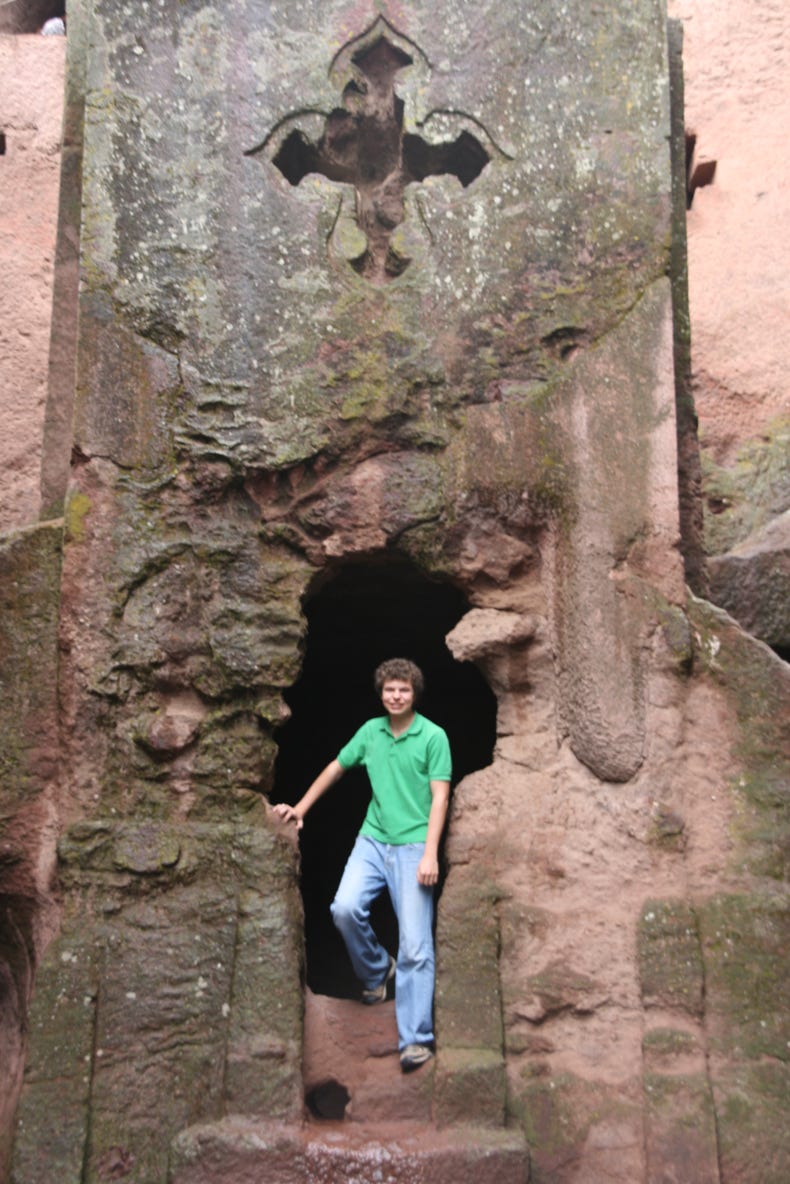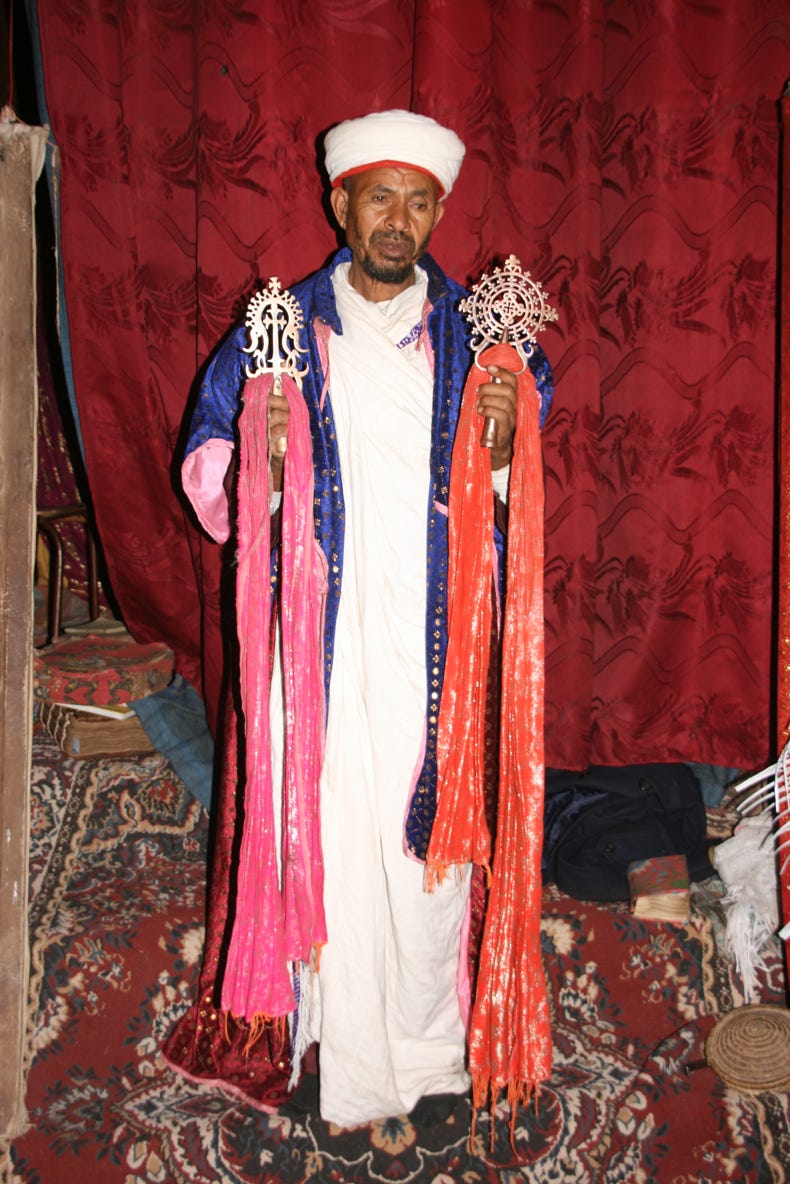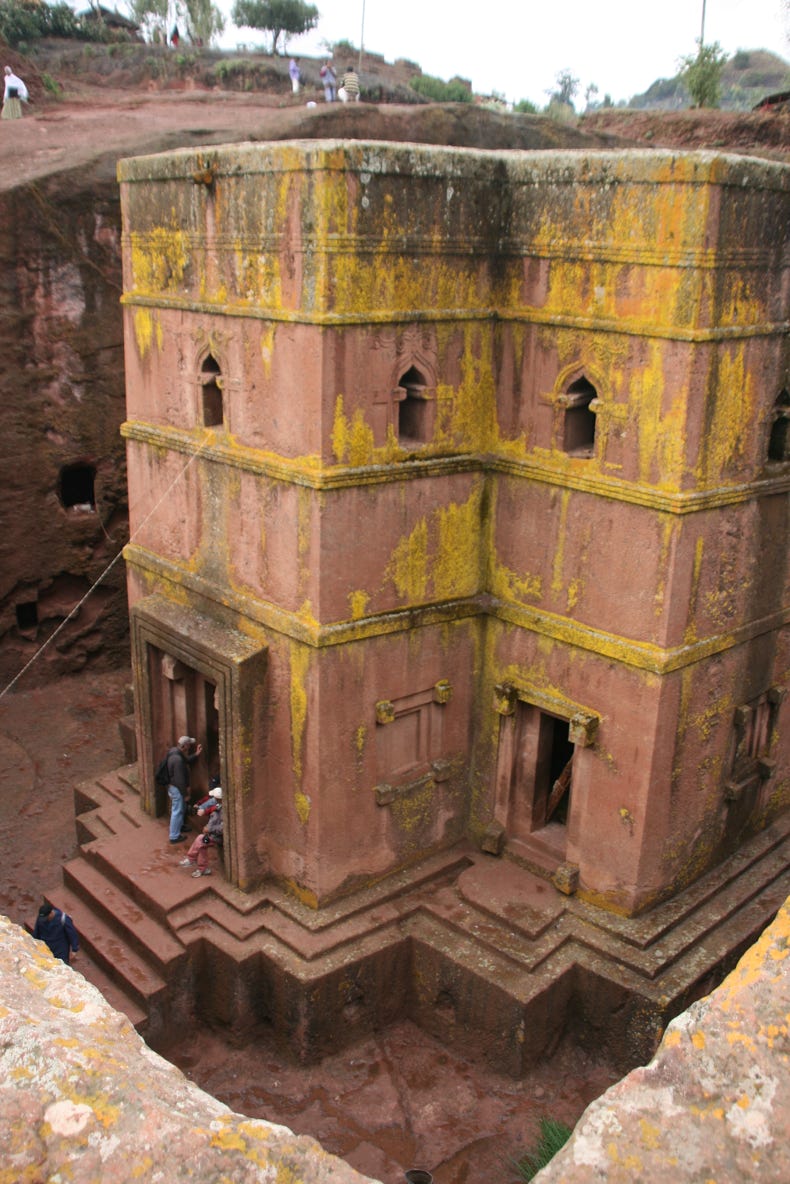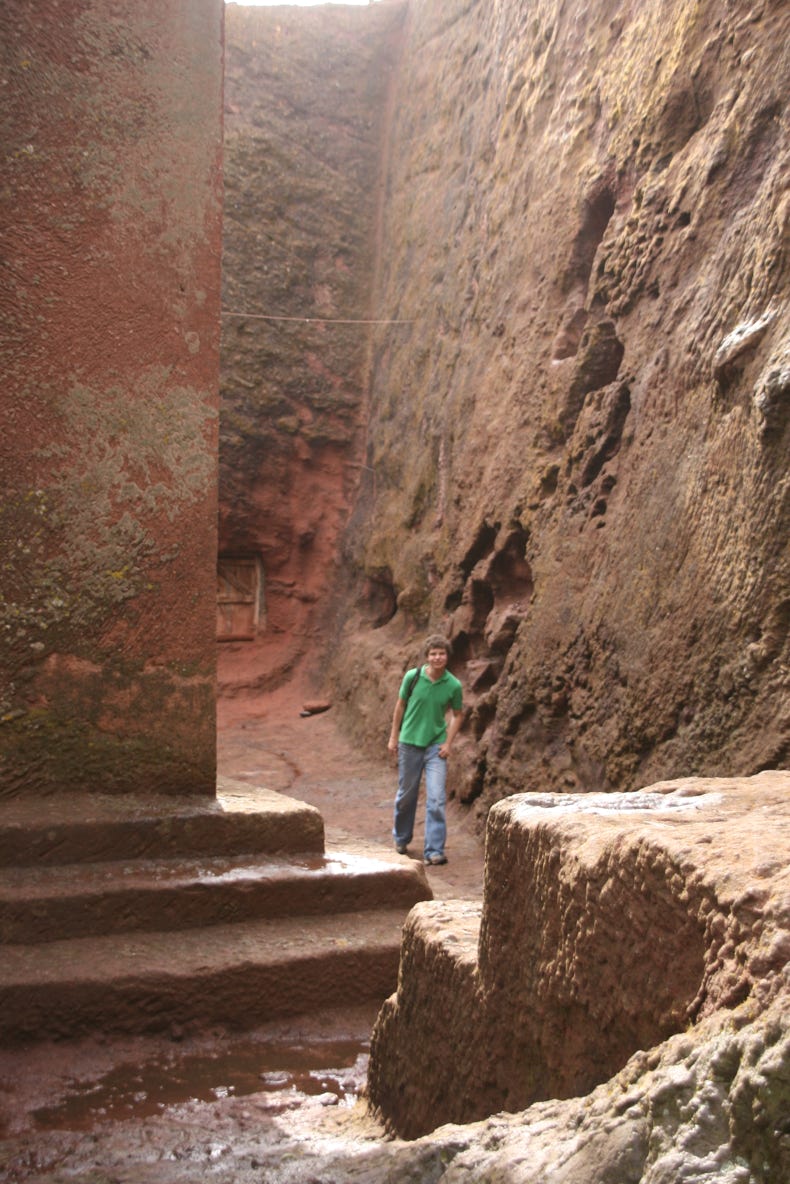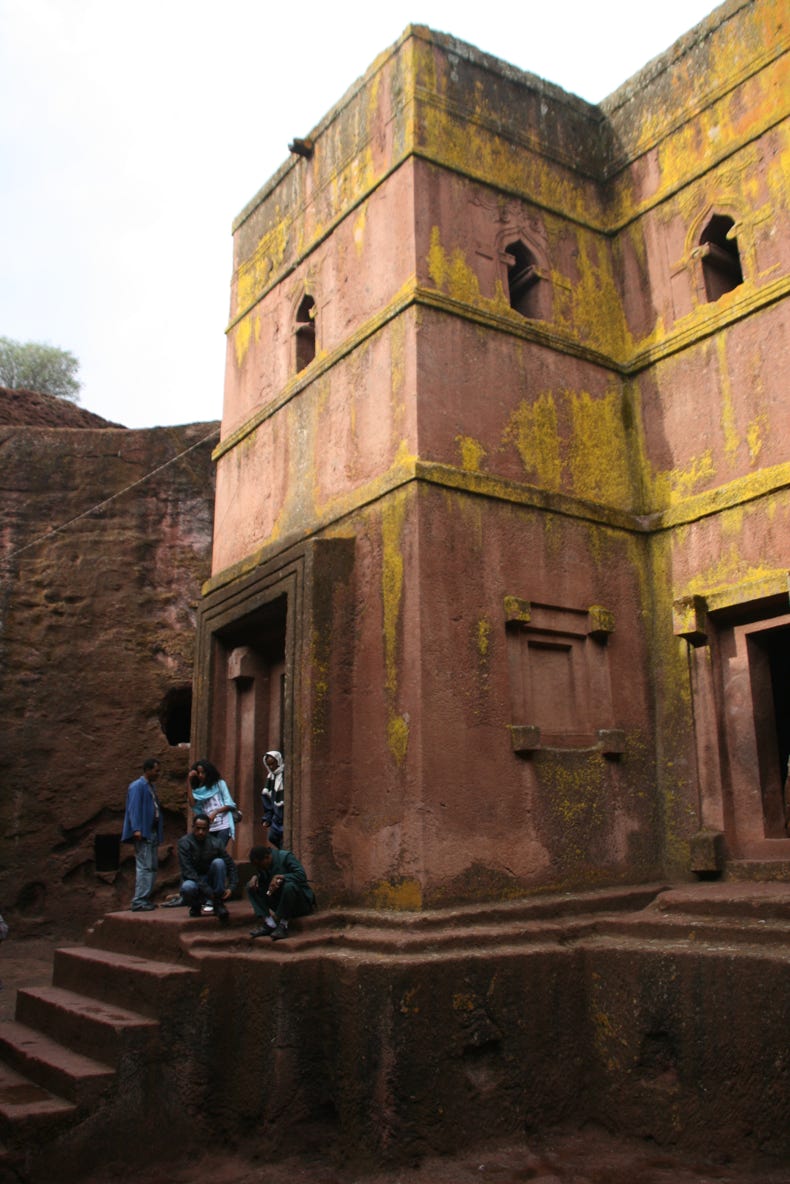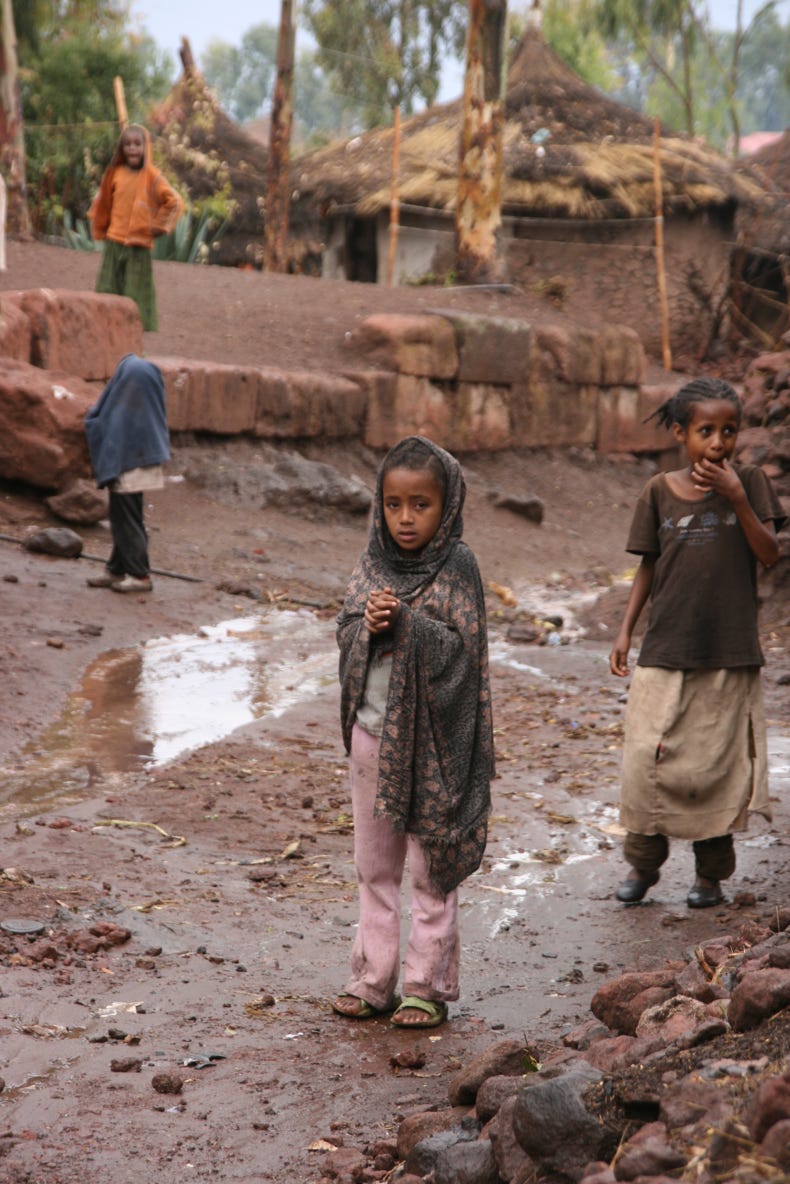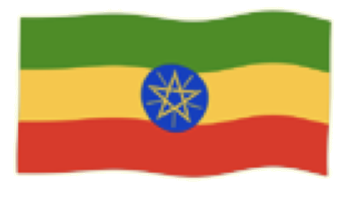

Like yesterday, my alarm was set for 5:30 am, and like yesterday it performed perfectly. A dark room in a hotel on a mountain top in Gonder is a great place to wake up to a new day, with the sounds of overnight raindrops dripping from the trees outside, birds chirping, dogs (hundreds of them) barking across the distant valley, roosters crowing, and the sound of a faint, distant call to prayer from a mosque, all in the pre-dawn dark gloom. The air was fresh and moist, tainted only by the aromatic smoke from burning wood in some nearby houses where timber was the basic fuel for both heating and cooking.
We had breakfast in the hotel, which comprised some excellent eggs and also some toast, the latter appearing as soon as we sat down - which was quite an achievement as its solid, dry, rock-like hardness and fossilised texture suggested it had been several years in preparation. A quick trip by minibus took us to the airport, where the one and a half hours stipulated check-in period seemed a bit generous given that only nine passengers were checking in for our flight. Still, it gave us the chance to savour a couple of superb macchiatos in the airport cafe overlooking the runway. Sadly, there were no planes to see, although we did get a great view of a farmer chasing his two cows off the taxiing area.
The flight to Lalibela was one sector of a daily “milk-run” Ethiopian Airlines service from Addis Ababa to Bahar Dar to Gonder to Lalibela to Axum. Our flight sector from Gonder to Lalibela was 35 minutes in the same Fokker F-50 that we had flown in a couple of days earlier into Bahar Dar. Our destination, Lalibela Airport, is situated at about 1850 metres altitude, but the town of Lalibela, which is 23 kilometres away, is situated much higher at 2630 metres. We completed the 800 metre climb in a
minibus, taking about 45 minutes to complete the spectacular drive up the edge of canyons, along ridges, through villages and farmland.
Even a drive along the highway can become a social occasion in Ethiopia. The driver of our minibus obviously knew the driver of another minibus, and so while overtaking the other minibus, he decided to catch up on news and conduct a merry conversation for a minute or so, shouting across to the bus we were overtaking while driving on the wrong side of the road at the same speed.
We arrived in Lalibela at about 11 am, and went first to our hotel to drop our luggage. Our hotel (the Tukul Village Hotel) was quite a new one, built just two years ago in the style of several interconnected round two-storey ‘tukuls’ (or traditional huts). Our room was light, spacious and clean, and had a lovely view across the River Jordan towards the central part of the town. Despite its basic facilities, it was probably the nicest hotel we had yet experienced.
The main attraction that had brought Andy and me to Lalibela was the town’s medieval rock-hewn churches. Lalibela was originally known as Roha, and under that name, the town was the capital city of the Zagwe Dynasty in the 12th and 13th centuries. It was during this period that the rock-hewn churches were built, as the city was a major centre of Christian influence at the time. King Lalibela (after whom the town/city was re-named in the late-1100s) apparently fled or was exiled to Jerusalem at one time in fear of his half-brother. When he returned, he vowed to build a new holy city - a new Jerusalem - and several of the place names reflect this, such as the River Jordan and Calvary (Golgotha).
Although Andy and I were both itching to start exploring, it was not really practical to do so as all the churches closed for a two hour lunch break between midday and 2:00 pm. So we took an enforced rest until midday, when we walked to the nearby Jerusalem Guest House to have lunch in its restaurant, known as Bethlehem Hall. Andrew chose beef goulash, but I was more attracted to the Chicken Hawaii as I was interested to see how this dish would be interpreted in the mountains of Ethiopia. As it turned out, it comprised some vegetables (minced green cabbage, minced white cabbage and finely sliced, fried miniature potatoes) with minced chicken served with a lump of finely chunked papaya. I don’t think you would find anything similar in Hawaii, but it was an enjoyable lunch, accompanied by a CD playing local music (that sounded suspiciously reggae), and topped off with a cup of local coffee at the end.
We had made arrangements to leave the hotel and begin sightseeing at 2:30 pm. At 2:00 pm, an intense storm erupted and a torrential downpour of rain began which did not diminish until about 4:15 pm. Fortunately, our destination was what is known as the north-western group of rock hewn churches which were quite dry inside, even if getting from one to another involved a potential drenching.
Lalibela’s rock-hewn churches date from the mid-1100s to the early 1200s. They were created by excavating downwards into the red volcanic tuff rock, leaving just the walls and roofs carved as a solid piece of remaining rock. Unlike the famous temples at Petra in Jordan, Lalibela’s rock hewn churches are not just a facade with a cave excavated
behind it, but they are carved in such a way that all four walls are free from the surrounding rock. You can get some idea of the concept by looking at the photo at the top of this page, which shows Bet Giyorgis (St George’s Church), the last one we visited this afternoon.
We began at the largest of the rock hewn churches, the Bet Medhane Alem (Church of the Saviour of the World). The style of the building resembled a Greek temple to some degree because it was surrounded by stone pillars, some of them still original and others reconstructed by the Italians in 1954. The interior of the church was massive (literally, given its means of construction!), measuring 33.5 metres by 23.5 metres, with a height of 11.5 metres. Unfortunately, today was this part of Lalibela’s rostered day to have no electricity (these rostered days seem to be chasing us through Ethiopia), and thus the interior of the church was so dark that a torch was needed. While we were there, a priest obligingly showed us the famous Lalibela Cross which has been stolen by an art dealer back in 1997, but which was subsequently recovered.
After visiting a couple of small chapels carved into the side of the cliff, we visited the Bet Maryan (St Mary’s Church). The interior of this church was especially dark, so much so that even the torch had trouble picking up any details in the amazing array of old, unrestored frescoes on the walls, most dating from the early 1200s. Because of the priceless nature of the frescoes, flash photography was not allowed, so we left feeling that although we had been in the building, we had seen very little of the treasures it contained.
Our last stop in the north-western group of churches was Bet Golgotha (Calvary Church), which contained some of the earliest surviving examples of Ethiopian Christian art. The interior walls featured life-sized carvings of seven saints, guarding a small room which had an arched recess at one end symbolising the Tomb of Christ. Beside the Tomb of Christ was a curtain and a slab of stone said to contain the grave of King Lalibela. Given the importance of this church, it is said (apocryphally I would strongly suggest) that a visit here assures one’s place in heaven. The priest in this church showed us a blackened metal cross and a prayer stick, both said to have belonged to King Lalibela himself.
Having seen most of the churches in the north-western group, and making the most of the weather that was now clearing, we walked through a beautiful part of the town with traditional buildings that could have been a rural village rather than part of this town of 10,000 people. Our destination was an isolated rock-hewn church that is said to be Lalibela’s masterpiece, the exquisite Bet Giyorgis (St George’s Church).
Unlike the churches in the north-western group, which have been covered with a grotesque modern awning by UNESCO to protect them from the ravages of the rains (and to present almost insurmountable challenges to photographers!), Bet Giyorgis stands in all its glory just as it was when it was built in the last decade of the 1100s. The church stands 15 metres high and is in the shape of a simple Greek cross.
The church is reached by walking down a narrow sloping carved canyon in the rocks which takes visitors into the excavated courtyard that surrounds the church itself. The sides of the excavated courtyard contain the mummified remains of corpses of people who had migrated to Lalibela in order to die there. Unlike the churches in the north-western group, Bet Giyorgis was comparatively light inside, natural light entering through three windows (representing the Holy Trinity) on each of the four arms of the cross, making a total of 12 windows representing the twelve Apostles. The elegant simplicity of the church and its perfect proportions were a joy to experience; it was a very special place to have the privilege of visiting.
For dinner this evening, we dined at our hotel (once again, dinner was included in the price). It was an interesting experience, like all our experiences in Ethiopia. The ‘dining room’ was a large, circular, open-plan, grass-roofed hut that doubled as the hotel’s reception area, book store and office. Just to put this in perspective, the book store had a total stock of 4 copies of one book. Being the only guests in the hotel at the moment, we definitely did not feel cramped! Dinner comprised bread and injera with an assortment of dishes including green cabbage, white cabbage, lentils, spicy beans, and diced beef. We received excellent personal attention from the very gracious and talkative manager, who was a gem and could not do enough to meet our needs, even to the point of warning us that tomorrow will be this area’s rostered ‘no-electricity’ day from 6:00 am until 10:00 pm. He has also organised some mules to take us into the mountains tomorrow, weather permitting, to see some isolated churches and some spectacular scenery. I really hope that the rain, which has started falling again, clears up before the morning.
